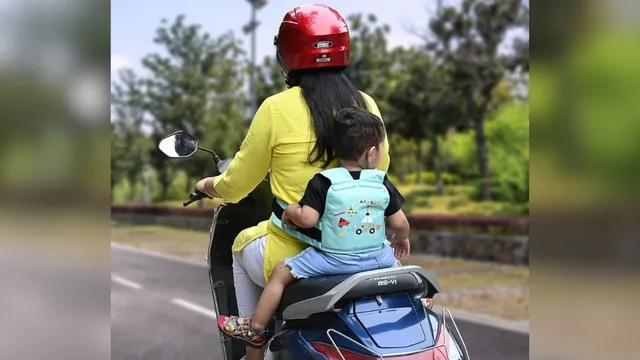- By Kanika Sachdeva
- Sat, 22 Nov 2025 06:09 AM (IST)
- Source:JND
Karnataka Child Safety Rules: In a move to address child safety, the High Court of Karnataka on Wednesday (November 19) gave the state government authorities a 6-month window to enforce Section 138(7) of the Central Motor Vehicles (Second Amendment) Rules, 2022. This rule makes safety harnesses and crash helmets mandatory for children riding pillion on two-wheelers.
Karnataka's New Child Safety Rule: Background
The order follows a Public Interest Litigation (PIL) seeking a direction to ensure the implementation of the rule, which was filed by Dr Archana Bhat, Associate Professor and Head of the Department of Psychology at Kateel Ashok Pai Memorial College, Shivamogga, in 2023. Moreover, the petitioner urged the State to take appropriate measures to provide safety equipment, including helmets, to children aged 9 months or older.
Also Read: Ather Energy Expands Retail Presence In Sri Lanka, Launches Rizta At This Price
Karnataka's New Child Safety Rule: What Does It Say?
To that end, a division bench comprising Chief Justice Vibhu Bakhru and Justice CM Poonacha directed the State to implement Section 138(7), which requires children between 9 months and 4 years, carried as pillion riders, to wear safety harnesses and crash helmets mandatorily. Given that roughly 15 per cent of child fatalities stem from ill-fitting or inadequate helmets, the transport authority, helmet makers, and two-wheeler retailers are being urged to collaborate and make helmets available at all stores.
The rule also states that the safety harness must be lightweight, durable, waterproof, capable of holding up to 30kg, and made of heavy or multi-filament nylon. Additionally, the rule stipulates that the speed of a motorcycle carrying a child pillion must not exceed 40 km/h.
Also Read: Royal Enfield Himalayan 450 Mana Black Launched In India: Price And Specs
The six‑month time period is crucial as the safety equipment is still in the stage of being researched and tested by manufacturers, according to state authorities. This will grant the State ample time to ensure the availability of safety equipment (harnesses and helmets) and continue educating the public about their usage.

